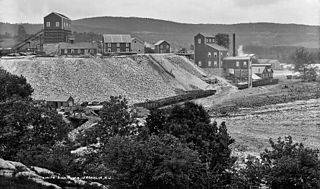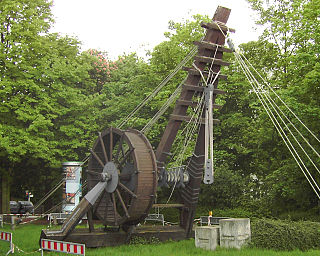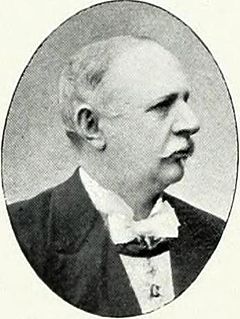
Thomas Alva Edison was an American inventor and businessman. He developed many devices in fields such as electric power generation, mass communication, sound recording, and motion pictures. These inventions, which include the phonograph, the motion picture camera, and early versions of the electric light bulb, have had a widespread impact on the modern industrialized world. He was one of the first inventors to apply the principles of organized science and teamwork to the process of invention, working with many researchers and employees. He established the first industrial research laboratory.

Sussex County is the northernmost county in the State of New Jersey. Its county seat is Newton. It is part of the New York metropolitan area and is part of New Jersey's Skylands Region. As of the 2020 United States Census, the county's population was enumerated at 144,221, making it the 17th-most populous of the state's 21 counties, and representing a decrease of 5,044 (3.4%) from the 149,265 counted at the 2010 U.S. Census, in turn an increase of 5,099 (3.5%) over the 144,166 persons at the 2000 Census. Based on 2010 Census data, Vernon Township was the county's largest in both population and area, with a population of 23,943 and covering an area of 70.59 square miles (182.8 km2).

Sparta is a township in Sussex County, New Jersey, United States. As of the 2020 United States Census, the population was 19,600, reflecting a decrease of 122 (−0.6%) from the 2010 United States Census, when the township's population was 19,722, which in turn reflected an increase of 1,642 (+9.1%) from the 18,080 counted in the 2000 Census.
A crusher is a machine designed to reduce large rocks into smaller rocks, gravel, sand or rock dust.

Franklin Furnace, also known as the Franklin Mine, is a famous mineral location for rare zinc, iron, manganese minerals in old mines in Franklin, New Jersey, United States. This locale produced more species of minerals and more different fluorescent minerals than any other location. The mineral association (assemblage) from Franklin includes willemite, zincite and franklinite.

The Sullivan Mine is a now-closed conventional–mechanized underground mine located in Kimberley, British Columbia, Canada. The ore body is a complex, sediment-hosted, sedimentary exhalative deposit consisting primarily of zinc, lead, and iron sulphides. Lead, zinc, silver and tin were the economic metals produced. The deposit lies within the lower part of the Purcell Supergroup and mineralization occurred about 1470 million years ago during the late Precambrian (Mesoproterozoic).

The ancient Romans were famous for their advanced engineering accomplishments. Technology for bringing running water into cities was developed in the east, but transformed by the Romans into a technology inconceivable in Greece. The architecture used in Rome was strongly influenced by Greek and Etruscan sources.

Nathaniel Peter Hill was a professor at Brown University, a mining executive and engineer, and a politician, including serving in the United States Senate. Originally from the state of New York, he came to Colorado following the Pike's Peak Gold Rush to try his hand at mining. He traveled to Europe to investigate ways to smelt ore and developed processes to make mining more profitable. He was the mayor of Denver before becoming a United States Senator.

A stamp mill is a type of mill machine that crushes material by pounding rather than grinding, either for further processing or for extraction of metallic ores. Breaking material down is a type of unit operation.

Stamp sand is a coarse sand left over from the processing of ore in a stamp mill. In the United States, the most well-known deposits of stamp sand are in the Copper Country of northern Michigan, where it is black or dark gray, and may contain hazardous concentrations of trace metals.
Nathaniel Shepard Keith was an American manufacturer, chemist, inventor, writer, and electrical engineer. Keith was born in Boston, Massachusetts and worked in his fathers laboratory. He was instrumental in designing, manufacturing, and installing the original electric lighting and power system in San Francisco, California. In 1884 he became editor of Electric World, co-founded the American Institute of Electrical Engineers (AIEE) and served as the first secretary of the organization. The AIEE merged with other societies in 1963 to become the IEEE, the Institute of Electrical and Electronics Engineers.

The Dunderland Line was a 23.7 km (14.7 mi) railway line between Gullsmedvik in the town of Mo i Rana and the village of Storforshei in Rana Municipality in Nordland county, Norway. Since 1942 the line has been part of the Nordland Line. The line was originally built and owned by Dunderland Iron Ore Company, which used it to freight iron ore from their mine at Storforshei to the port at Gullsmedvik.

The Ogden Mine Railroad was a mine railroad in the U.S. state of New Jersey from 1866 until 1941.

Drakelands Mine, also known as Hemerdon Mine or Hemerdon Ball Mine, is a tungsten and tin mine. It is located 11 km northeast of Plymouth, near Plympton, in Devon, England. It lies to the north of the villages of Sparkwell and Hemerdon, and adjacent to the large china clay pits near Lee Moor. The mine had been out of operation since 1944, except for the brief operation of a trial mine in the 1980s. Work started to re-open it in 2014, but it ceased activities in 2018. It hosts the fourth largest tin-tungsten deposit in the world.

The Sterling Hill Mine, now known as the Sterling Hill Mine Tour & Museum of Fluorescence, is a former iron and zinc mine in Ogdensburg, Sussex County, New Jersey, United States. It was the last working underground mine in New Jersey when it closed in 1986, and it became a museum in 1989. Along with the nearby Franklin Mine, it is known for its variety of minerals, especially the fluorescent varieties. It was added to the National Register of Historic Places in 1991.

The Edison Portland Cement Company was a venture by Thomas Edison that helped to improve the Portland cement industry. Edison was developing an iron ore milling process and discovered a market in the sale of waste sand to cement manufacturers. He decided to set up his own cement company, founding it in New Village, New Jersey in 1899, and went on to supply the concrete for the construction of Yankee Stadium in 1922.
The history of Sussex County, New Jersey spans over 13,000 years from the time Paleo Indians arrived after the Wisconsin glacier melted to the present day, and the entire width of the American experience.

The Highland Valley Copper mine is the largest open-pit copper mine in Canada, located near Logan Lake, British Columbia. It is an amalgamation of three historic mining operations: Bethlehem, Lornex and Highmont.

Mabel Mill is a heritage-listed former stamper battery at Barton Street, Ravenswood, Charters Towers Region, Queensland, Australia. It was built from c. 1871 to c. 1902. It is also known as Mabel Mill and Partridge Mill. It was added to the Queensland Heritage Register on 28 January 1994.

Nils Persson was a Swedish consul, businessman, and politician from Helsingborg.


















